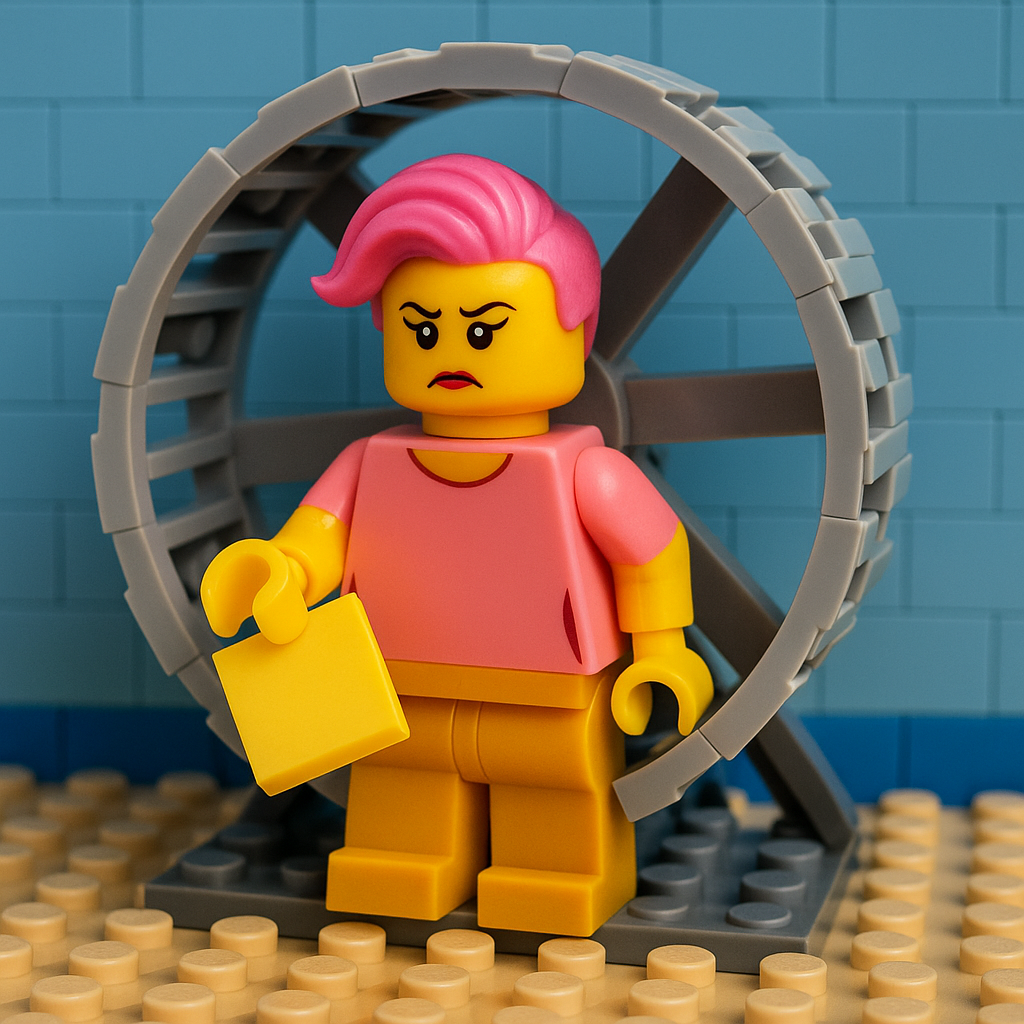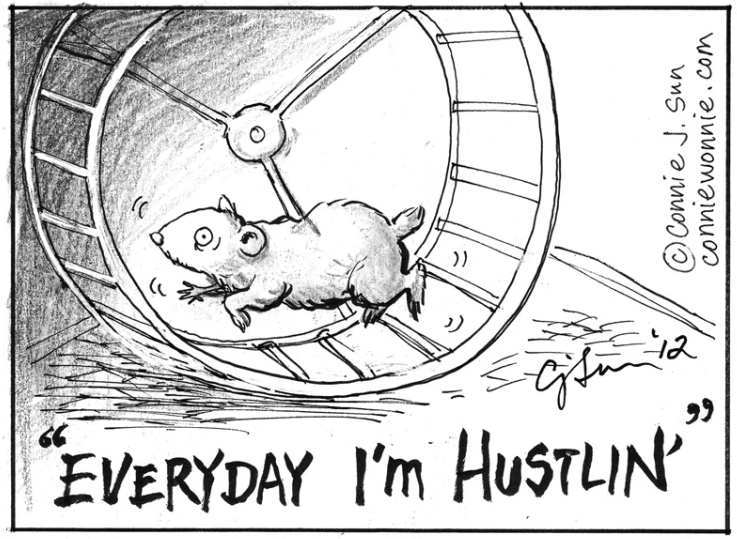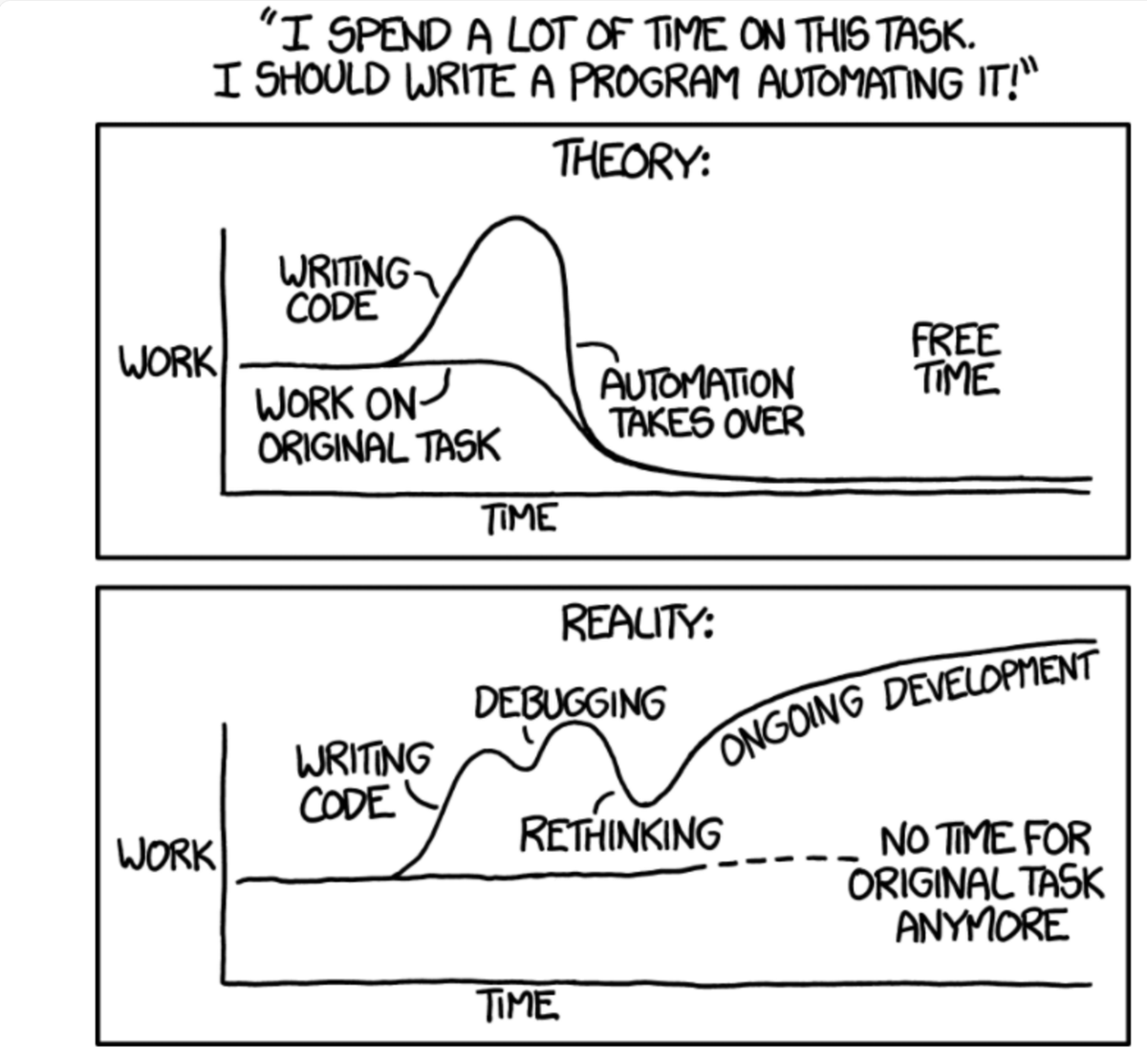Unmeasured: Part 4 – The emotional cost of the productivity theater

We gave everyone Copilot. We automated the meetings, the summaries, the reports. We freed up time. And what did we do with it?
We built a faster treadmill.
(I’d even call it a dreadmill)
We turned the productivity theater into a 24/7 show. We forgot that humans are not machines, and now we’re burning them out faster than ever.

Always performing, never breathing
Modern work has turned into a constant stage production. It’s not enough to do your job; you have to be seen doing it. Green lights in Teams chats, super-fast replies to emails, endless calendar invites that prove how busy and important you are. Every minute of your day is visible, trackable, and ultimately judged.
Thinking? Invisible. Strategic reflection? Invisible. Actual problem-solving? Mostly invisible too.
Copilot accelerates the visible tasks: writing emails, summarizing meetings, producing outlines faster than ever before. But instead of using the time gained to breathe, to think, to recover, we fill it with more noise. We push even harder. We demand even more.
We freed up time; then we punished people for not refilling it with even more visible busyness.

Speed isn’t freedom. It’s a trap.
Copilot and other AI tools were sold to us as a path to smarter, freer work. Less admin. Less repetitive grind. More room for creativity, for deep work, for innovation. But nobody updated the expectations. Nobody paused to ask: if the work speeds up, does the human pace stay the same?
Instead, faster output led directly to faster demands. Tasks that once took hours now take minutes, but rather than creating space to think better, we just stack more tasks on top. Deadlines shrink. Response times tighten. Expectations creep upward. The system got faster, but the humans inside it are still operating on the same biological limits, and they’re breaking.
The metrics are still killing us
The new world of Copilot-generated deliverables didn’t come with a new dashboard. It’s still the same old obsession: output, throughput, activity.
Managers look at the new velocity numbers with excitement, celebrating the “boost” in productivity without asking the harder questions:
- Are people thinking better, or just producing faster?
- Are teams learning, or just sprinting?
We have smarter tools, but we still treat people like battery packs: how much can we squeeze out before the lights flicker?
Productivity theater: a survival strategy
In this system, survival isn’t about doing better work but about being seen doing work. You learn quickly: Stay visible. Move fast. Never pause too long or someone will assume you’re slacking. The cycle feeds itself.
Hard thinking becomes risky. Questioning becomes dangerous. Deep work becomes a liability.
And so, people perform.
They perform busyness. They perform progress. They perform commitment. Not because they are lazy, but because the system rewards performance over purpose.
Productivity theater isn’t a glitch; it’s a rational adaptation to an irrational environment.
Burnout isn’t a bug
It’s the system working as designed. We pretend burnout is a personal failing. We say people should “manage their stress better”, “find balance”, “use their wellness apps”. Meanwhile, the entire structure demands more, faster, louder, constantly.
- We don’t measure emotional load
- We don’t track cognitive exhaustion
- We don’t reward sustainable pacing or deep work or creative recovery
Burnout isn’t a rare tragedy. It’s a feature. It’s the predictable outcome of a system obsessed with deliverables and blind to human cost.
Now Copilot lets you create more deliverables, faster. And if you think that will reduce burnout, you haven’t been paying attention.
What if we measured what actually matters?
Imagine if the health of a team wasn’t judged by how many tickets they closed or how many meetings they sat through. Imagine measuring trust, safety, learning, and resilience. Imagine dashboards that asked:
- Are teams making space for recovery after big pushes?
- Are people allowed to say no to bad ideas without fear?
- Are leaders modeling sustainable work, or just sprinting toward the next collapse?
You can’t automate empathy
Copilot can write your meeting summaries. It can help you draft your status updates. It can suggest faster ways to complete tasks.
But it cannot see when your engineer is one deliverable away from collapse. It cannot notice when your designer stops taking creative risks because they’re too drained. It cannot feel when your team starts working out of fear instead of purpose.
- Empathy is leadership.
- Empathy is strategy.
- Empathy cannot be automated.
If we only optimize for visible output, we will burn through our best people, and no dashboard will warn us until it’s too late.
Closing thought
If your dashboards look great but your teams are exhausted, you’re not succeeding, you’re just managing a slow-motion collapse. Productivity gains mean nothing if they cost your people their energy, their creativity, their trust. The future isn’t about automating faster. It’s about caring smarter.
The next post will close out the Unmeasured series by exploring how we can rethink productivity altogether: Not just to get more done, but to build something more human, more sustainable, and ultimately more valuable.
Because better work begins with better systems. And better systems start by respecting the people inside them.
More parts of this series
- Unmeasured: Part 0 - More ain’t better
- Unmeasured: Part 1 – We are measuring the wrong things
- Unmeasured: Part 2 – The difference between running and changing your business
- Unmeasured: Part 3 – The agility illusion
Some resources
Published on:
Learn more